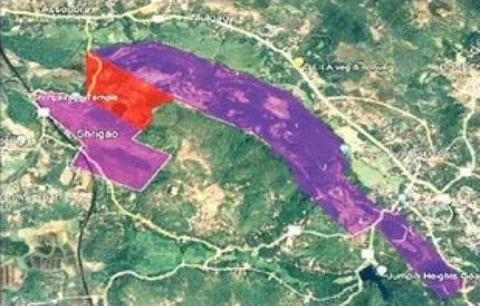

Goans must thank Goa Foundation for single handedly fighting against all odds and for decades to ensure that Goa got its fair share from its mining wealth.
The recent budget with only four mines auctioned, and another five in the process, the Goa Government has projected 1,000 crores as revenue from mining. Compare this to the fact that historically in only two years 2010-12 did mining revenue come close to 1,000 crores.
There is a big question mark over the ability of the successful bidders to be able to get all the required clearances and start in this financial year. The HC has said auctioned leases will need fresh environmental clearance (EC), under the old EC’s the miners caused havoc by rapacious and rampant exploitation regardless of any concern for environment. This means new EC’s will consider a better way forward.
The Supreme Court (SC) cancelled the 88 hurriedly renewed leases in 2018. The renewals were done just before the law mandating auctions was passed in 2015. Since then no action was taken by the State Government, they waited for the final SC judgement in 2021, putting at rest any and all claims lease holders had to running the mines till 2037. A year later, the Government began the mineral block auctions.
The damage or rather loss to the exchequer was already done. Had the second renewal not been done, the exchequer would have richly benefited through auction premium and not just 15% royalty + 10% GIOPF. Better late than never is the operative way. Goa can now look at getting a better deal for its mining wealth. One can only wonder why the State choose to do what it did for so many years.
The Supreme Court ordered the setting up of the Goa Iron Ore Permanent Fund (GIOPF). 10% of the sale value is compulsorily deposited in this fund, which currently has approx 600 crores. It is to be noted that if this fund is not actively invested its value will be eroded.
The State has started new auctions but they seem to be done haphazardly. This will only create problems and delays in restarting. In 3 out of the 4 blocks, village settlements have not been acknowledged, including the famous Devi Lairai temple. These should have been excluded. If these areas had been excluded, it would mean recalculating the reserves and dumps, which is a huge but necessary time consuming task. Going forward, the State should do its homework and then put the lease up for auction, it will also get better premium.
Pissurlem farmers have got some respite after years, the court has instructed the mining companies involved there to restore or desilt 5,000 sqm out the approx 50,000 sqm damaged. The point is why are the mining companies irresponsible and need to be forced to repair the damage, should they not do it automatically? Is it not a condition when the lease was given? Hopefully going forward these aspects will be taken care, not only will the State get more contribution through the auctions but policies will be in place to ensure these mistakes are not repeated.
There is a mining cap of 20 MT of ore per year. With the number of mines being auctioned increasing, a watch has to be kept, and thus a policy has to be in place. How will this 20MT be subdivided between the successful bidders? The mining allocation has to be economically viable for each bidder.
Given that the auctions are going to generate a lot more money, it is imperative the Government strengthens the Mines and Geology department. Those in charge should not be career bureaucrats but technical experts who understand and are qualified to work in this area. They should activate their laboratory to test the mineral samples, this has been defunct for long.
Ore is usually shipped to Singapore and then sold to the final buyer via a “high seas” sale. There is a provision to match the “high seas” invoices against the invoices raised locally, for quantity and value. Is this done, if not going forward it should be.
Cavrem village has opposed the mining in their area, they are fearful of their springs getting destroyed. They are not wrong, the issues faced today by Pissurlem or Shirgao are very visible. They managed to find the right ears and the public hearing was cancelled. Why start a mine where there will be no auction premium, since it is a pre auction lease?
In the first round of auctions, the State received upfront payment, unlike earlier when it received royalty only when ore was shipped out of the mine. Till date the royalty was a minuscule amount. Now, the inflows are going to increase. Only 10% is mandated to be transferred to the GIOPF, the rest will be spent by the State and the proverbial family silver will be lost forever.
There are two cases of best practice, Alaska which keeps all the money in a fund, the real income is used to pay citizens a dividend. In Norway, 100% of the money received from mining is put into a fund, and the real income is used to for development. This means that long after the ore is exhausted the succeeding generations will inherit the fund and benefit from the income. I would believe the Norway model is better suited to Goa. We are used to not having mining revenue due to the stoppage so it would be ideal to plough all the receipts into GIOPF and use only the income for the development of the State.
The concept of Inter-generational Equity, we leave what we inherited for our children, not consume everything, selfishly. Looking forward to a new era of mining where Goa gets the full benefit and the increased inflows are used judiciously for the benefit of the State.
(The author prefers to write rather than chat in a balcao.)